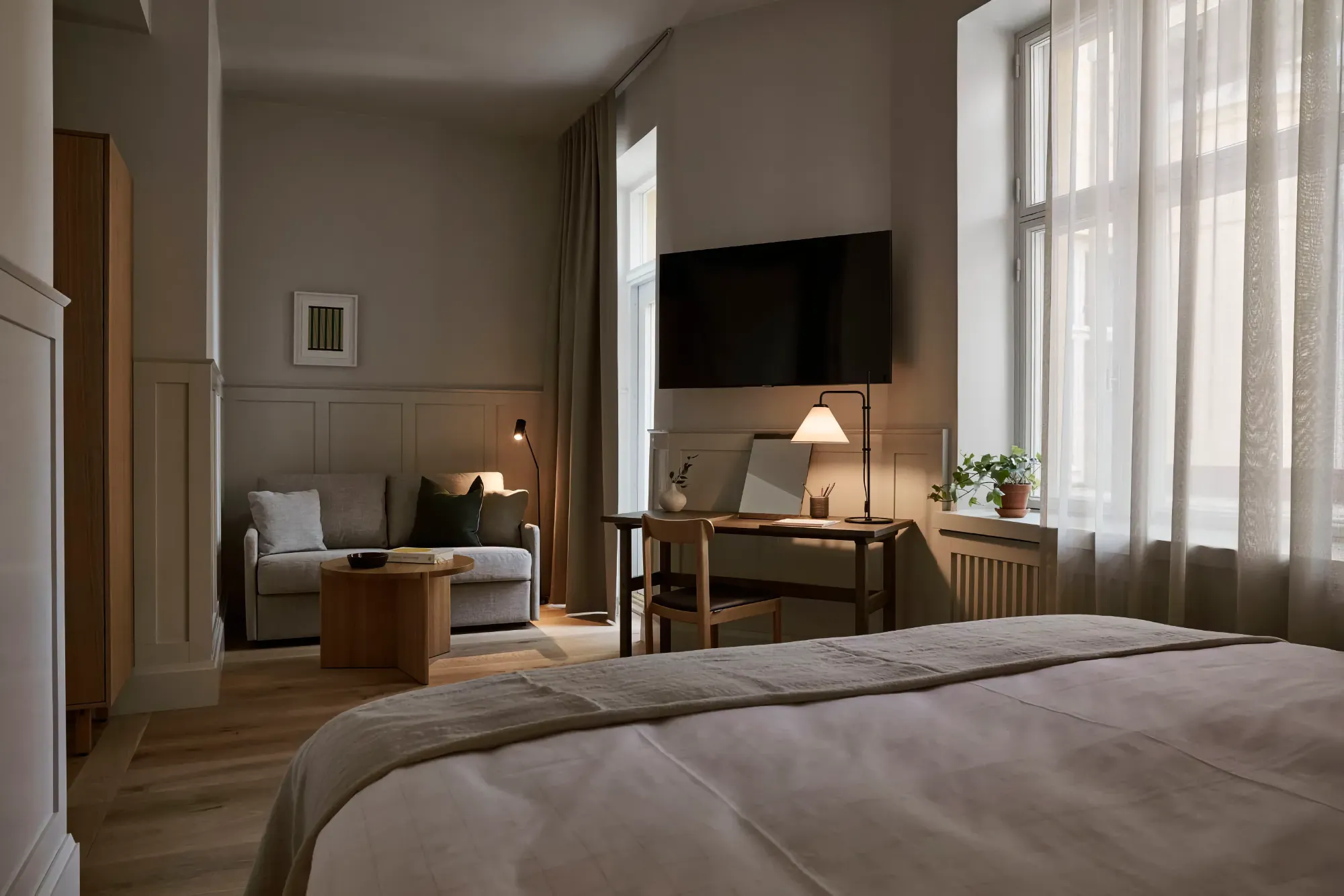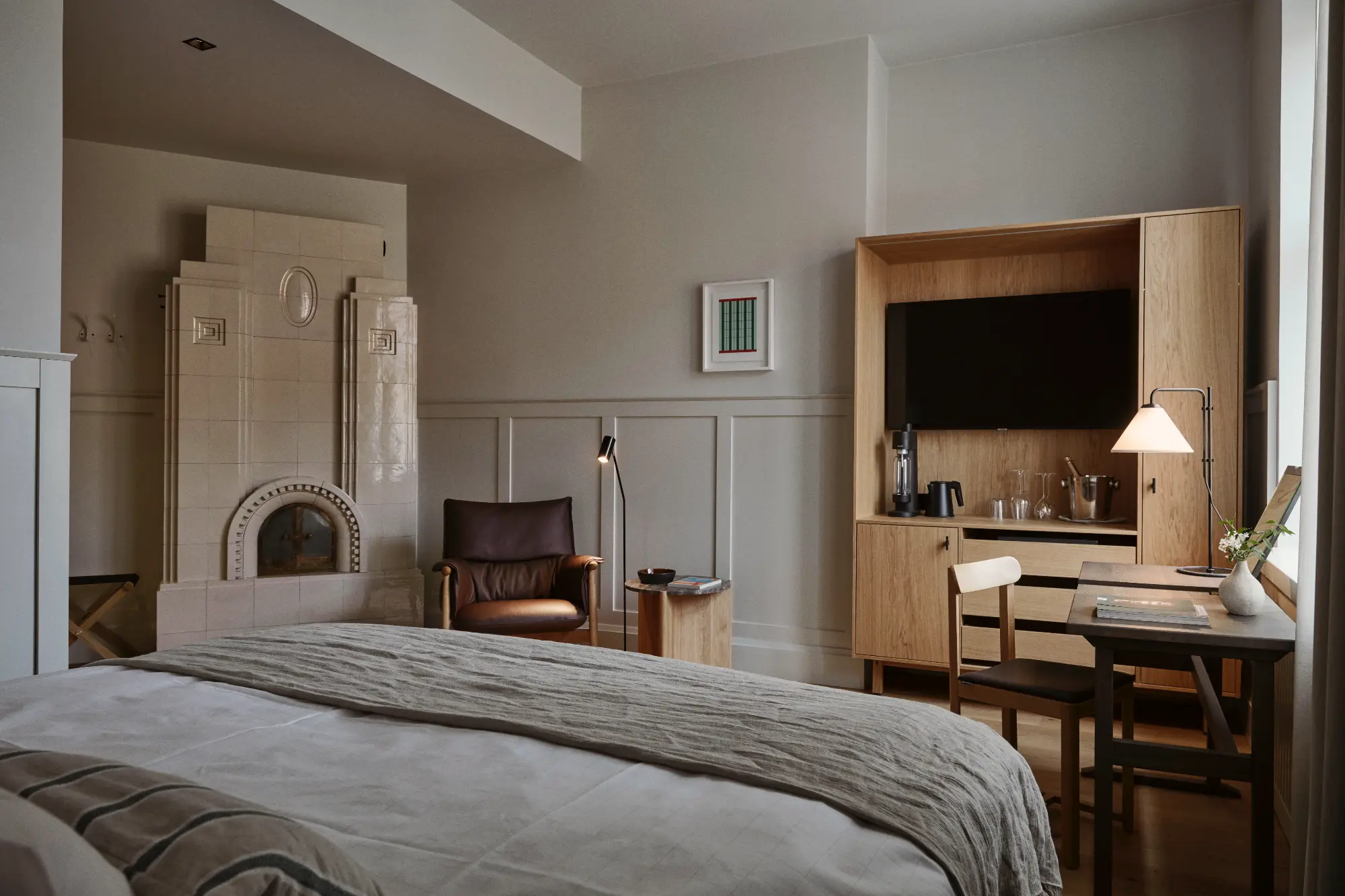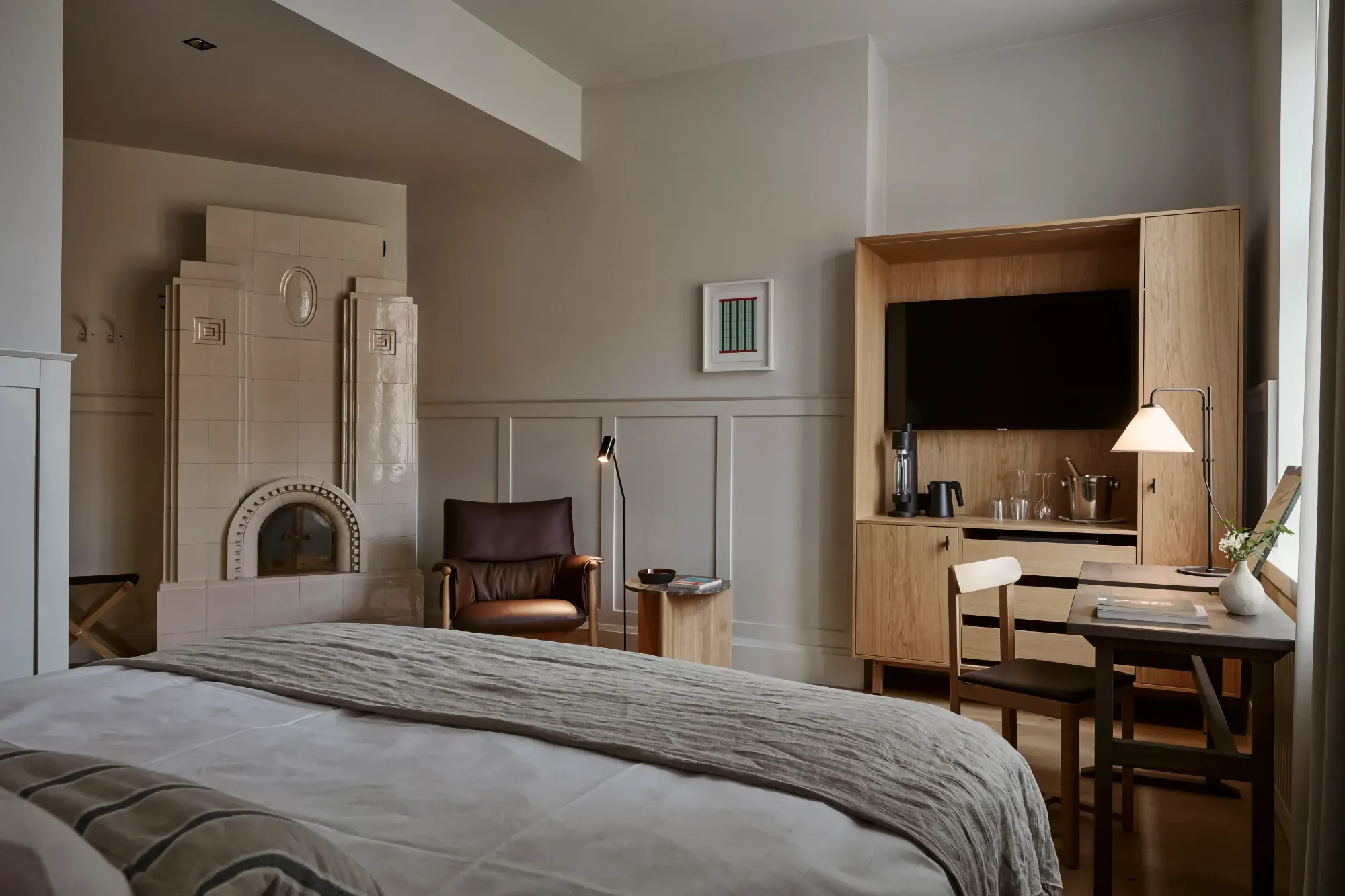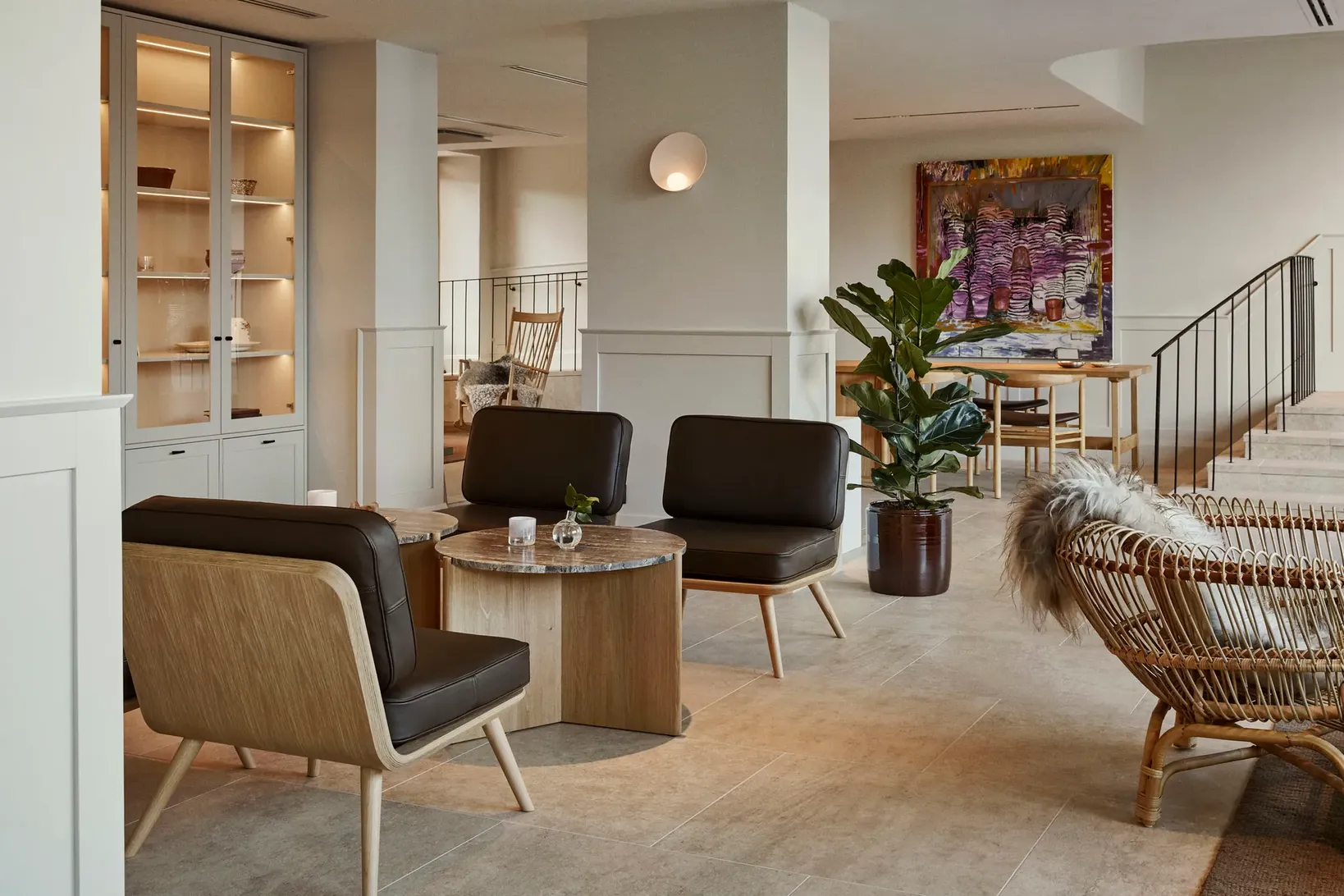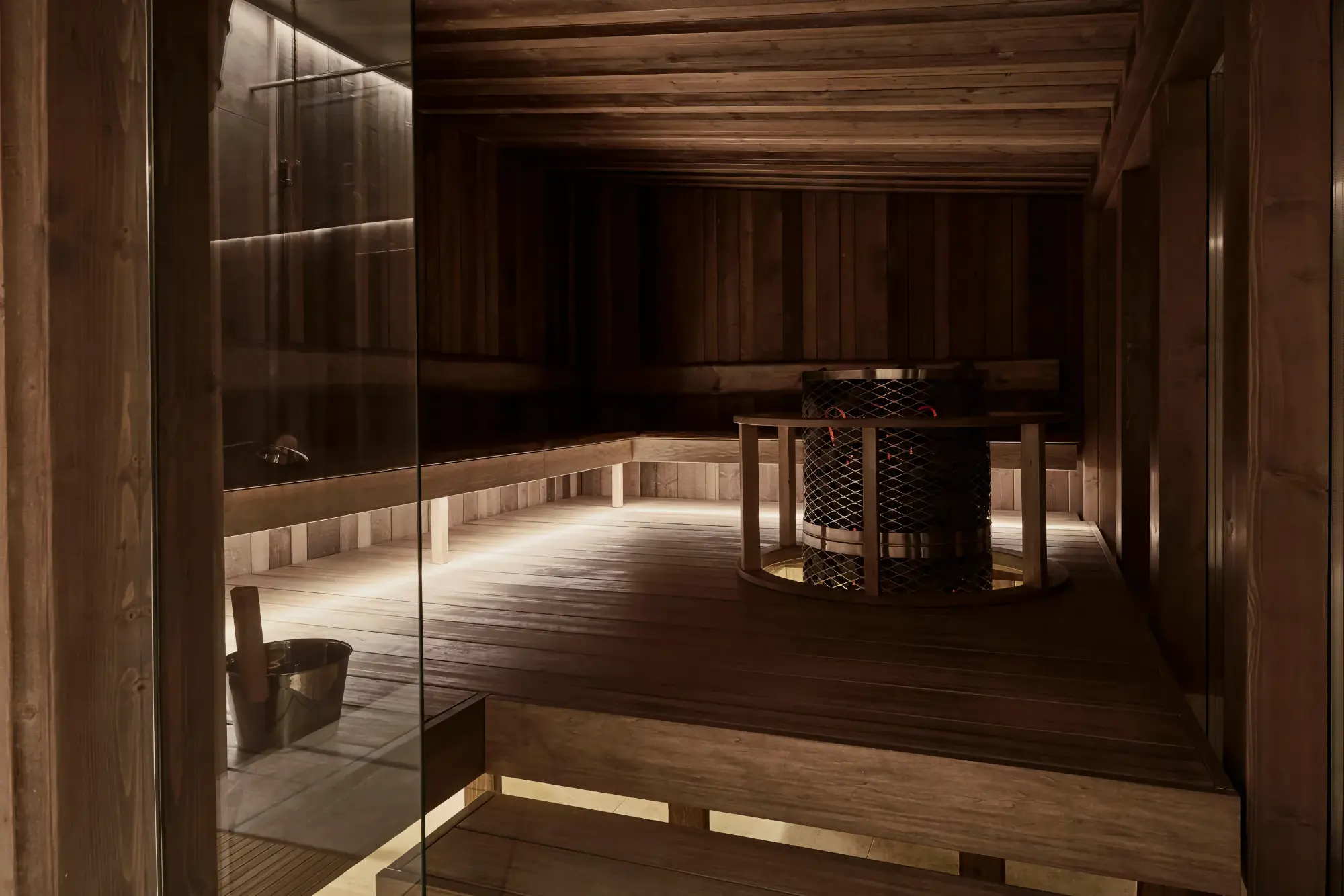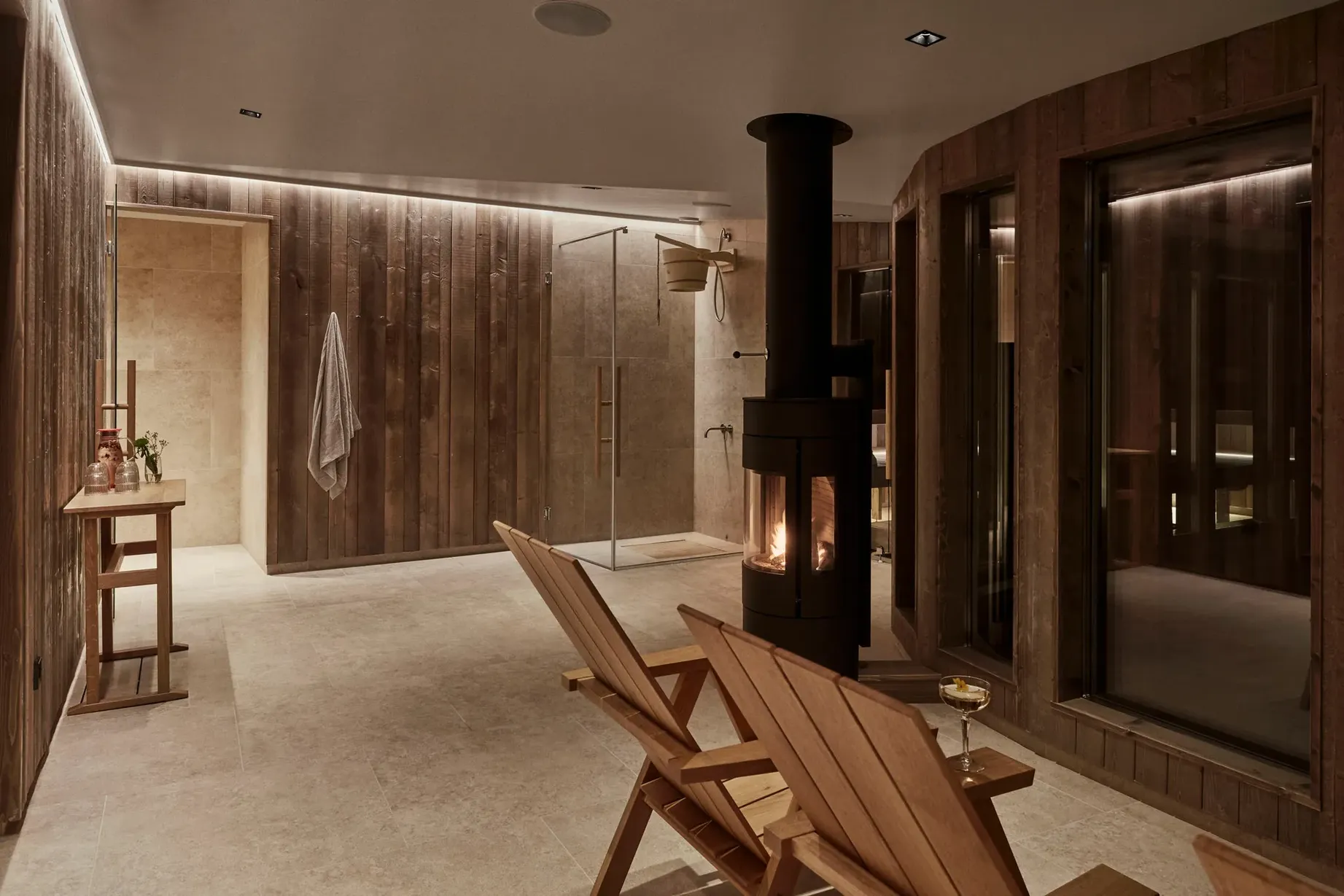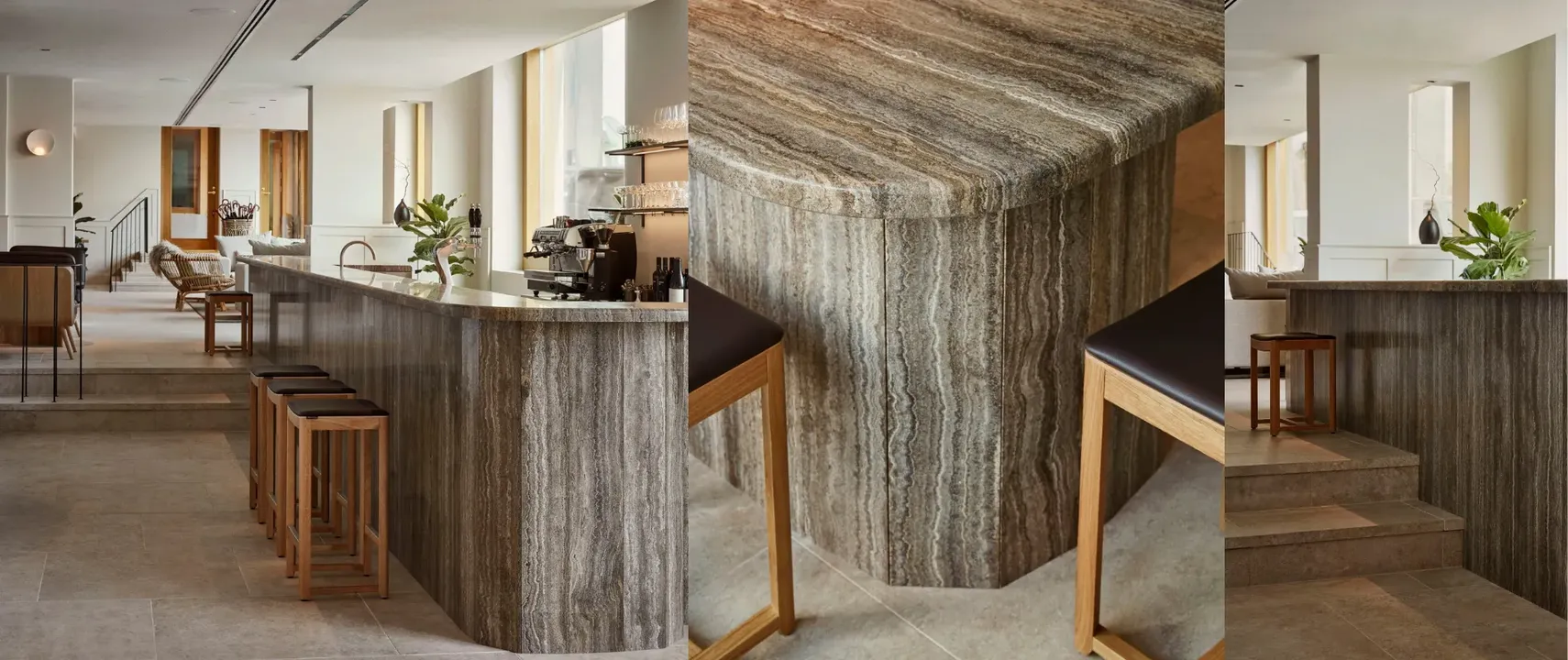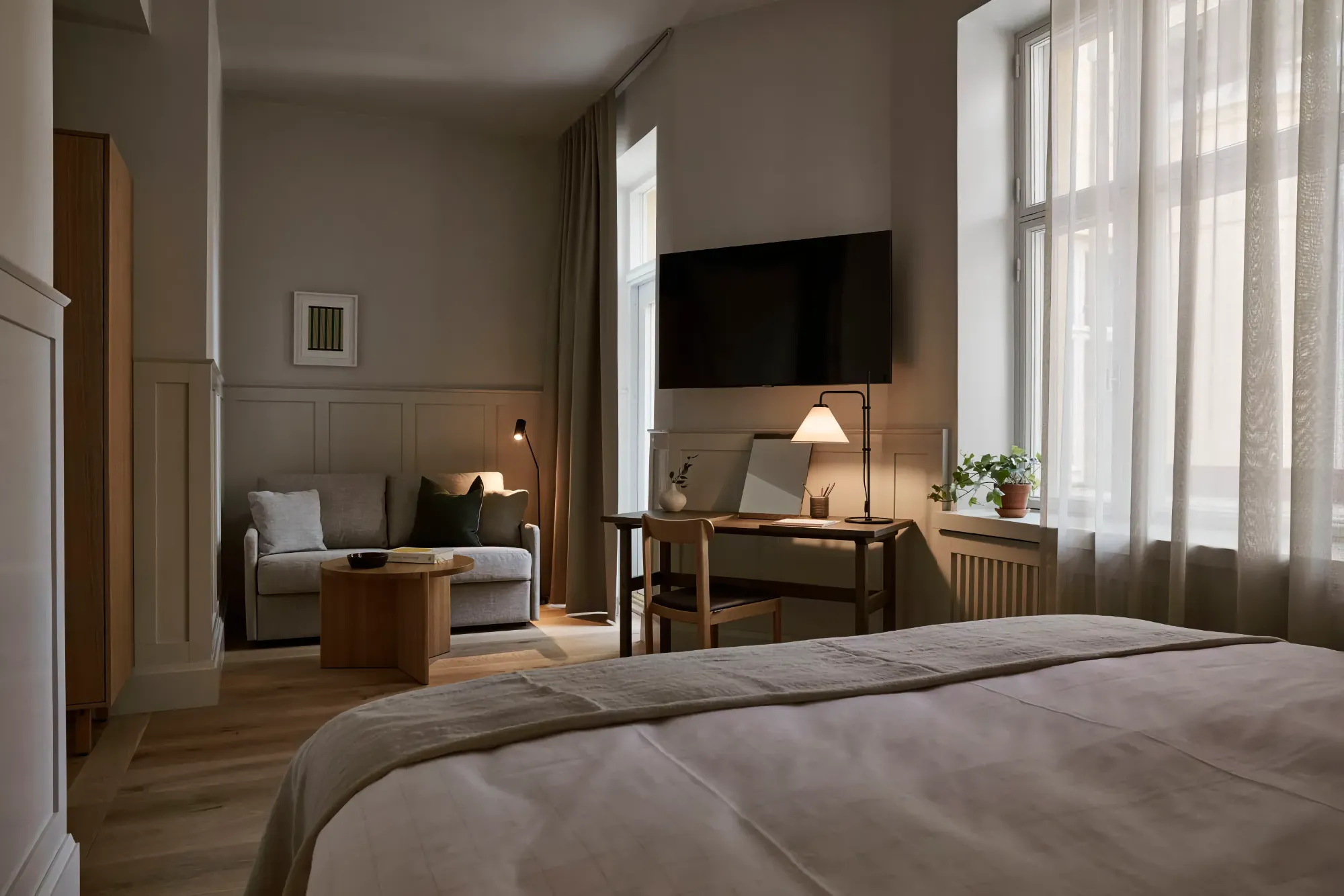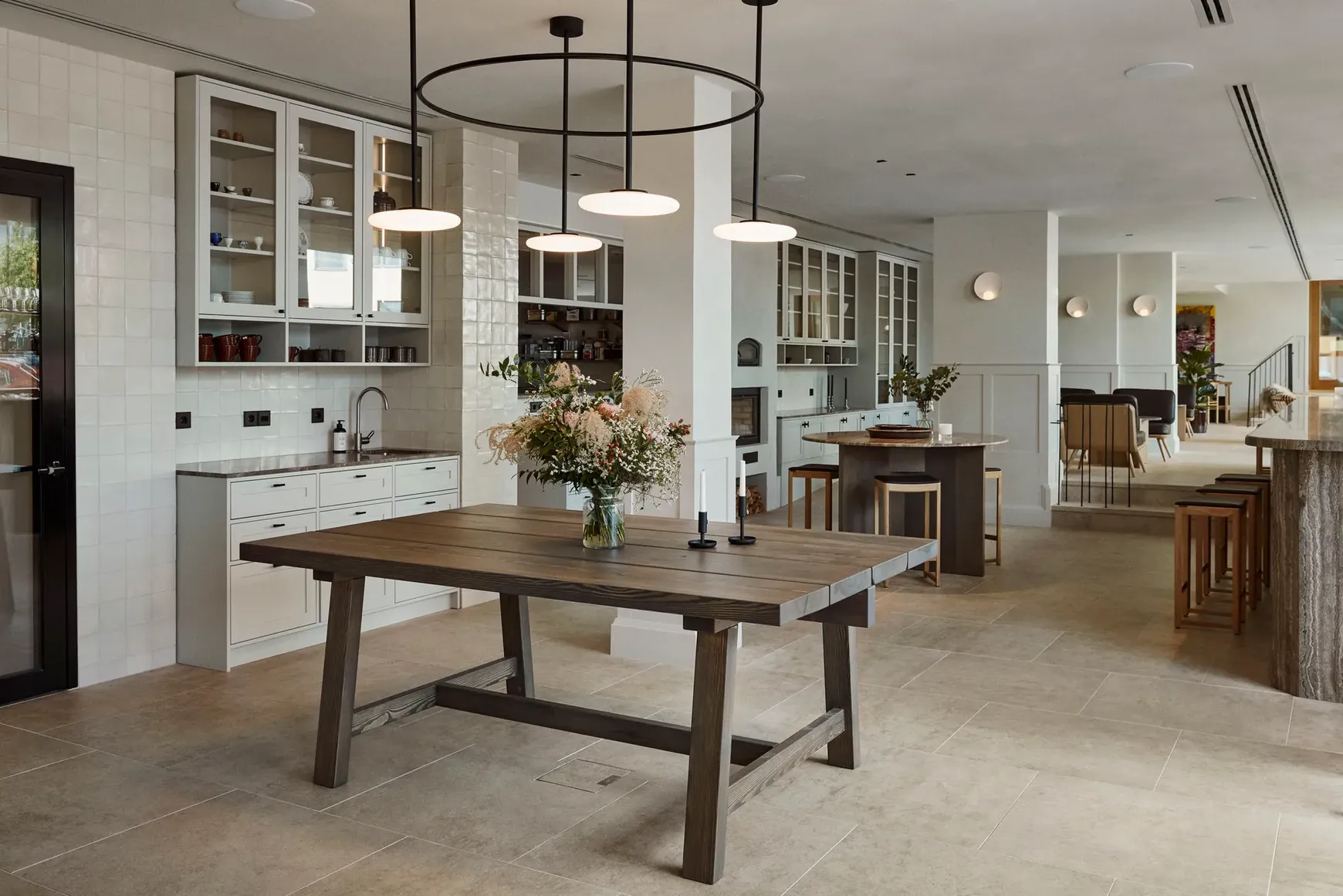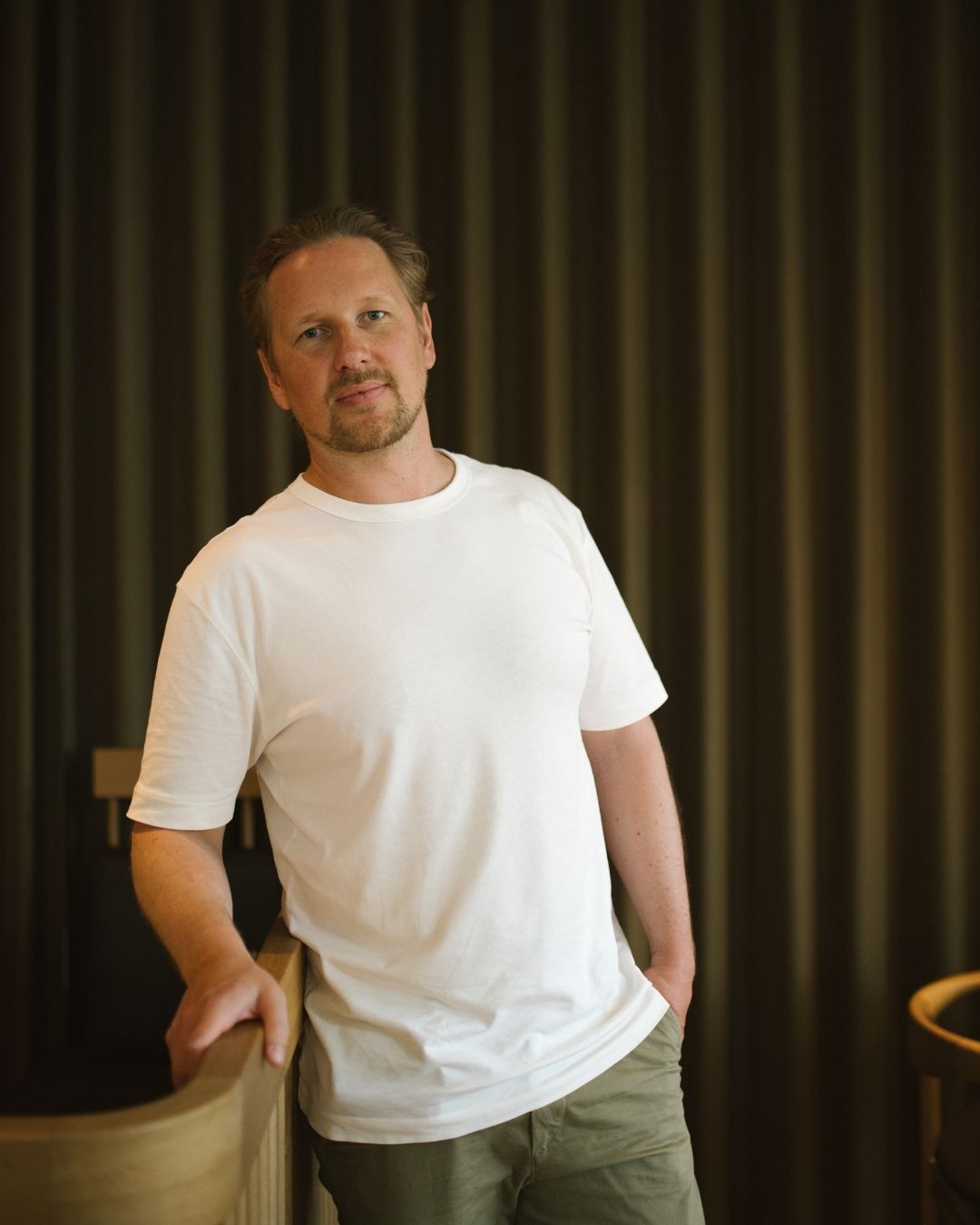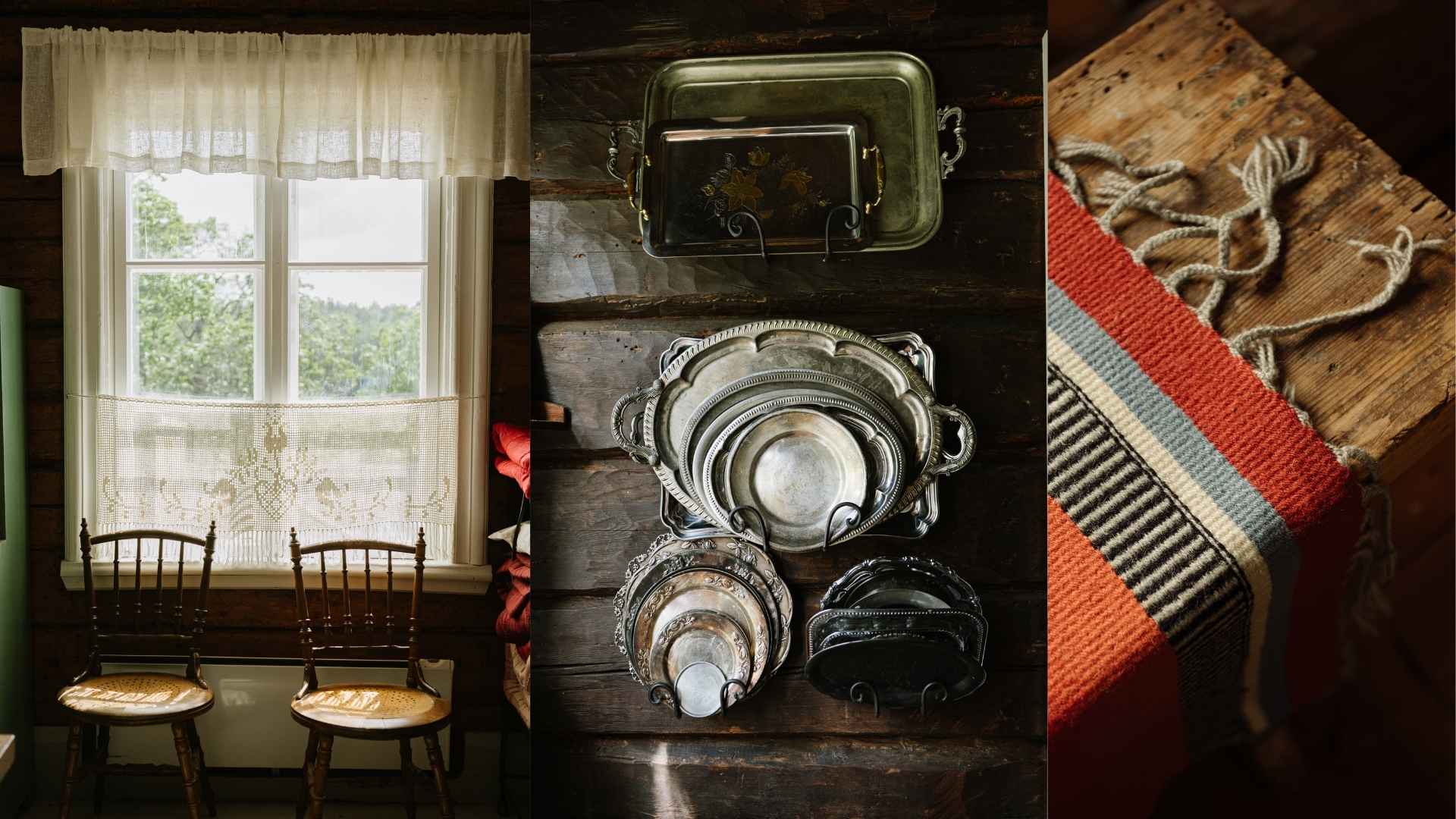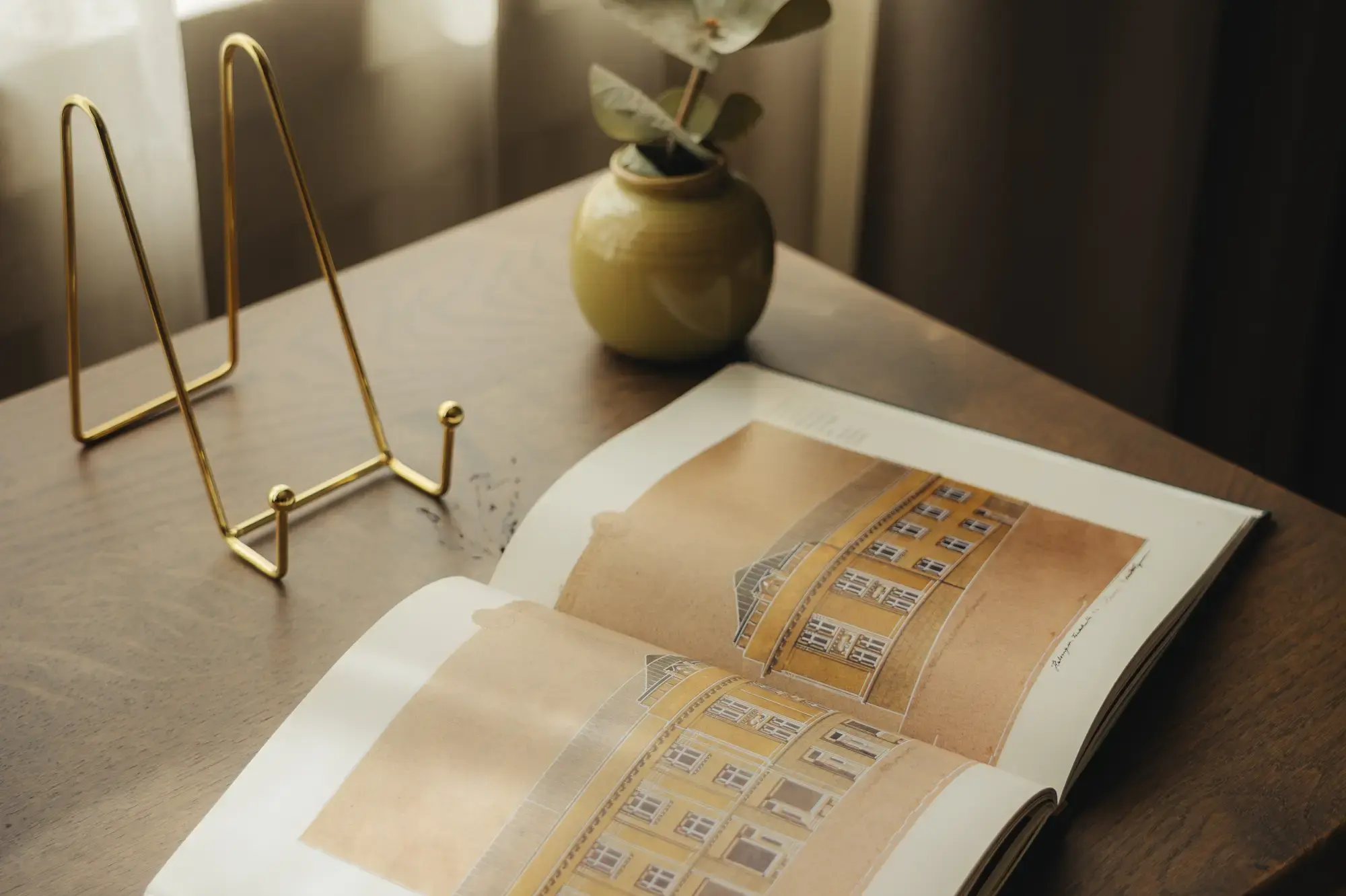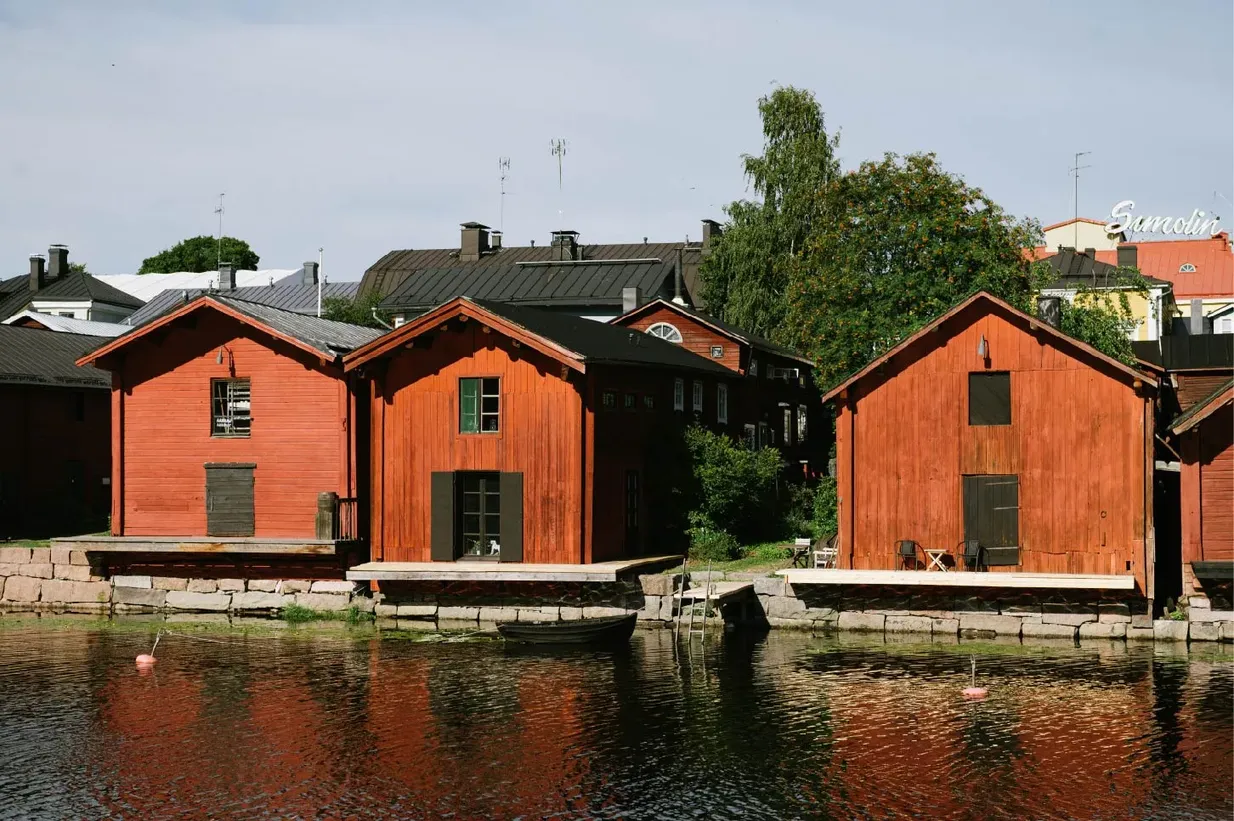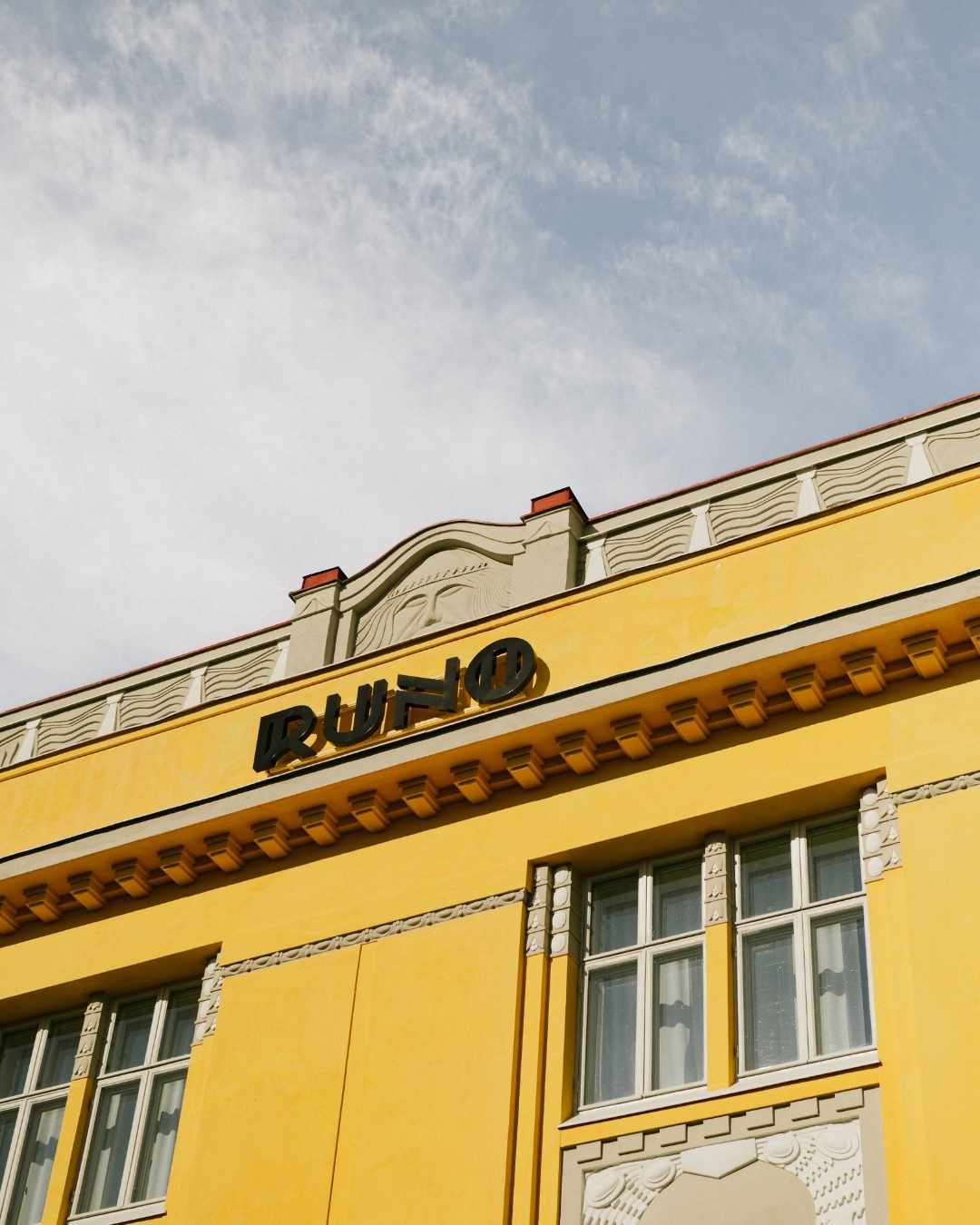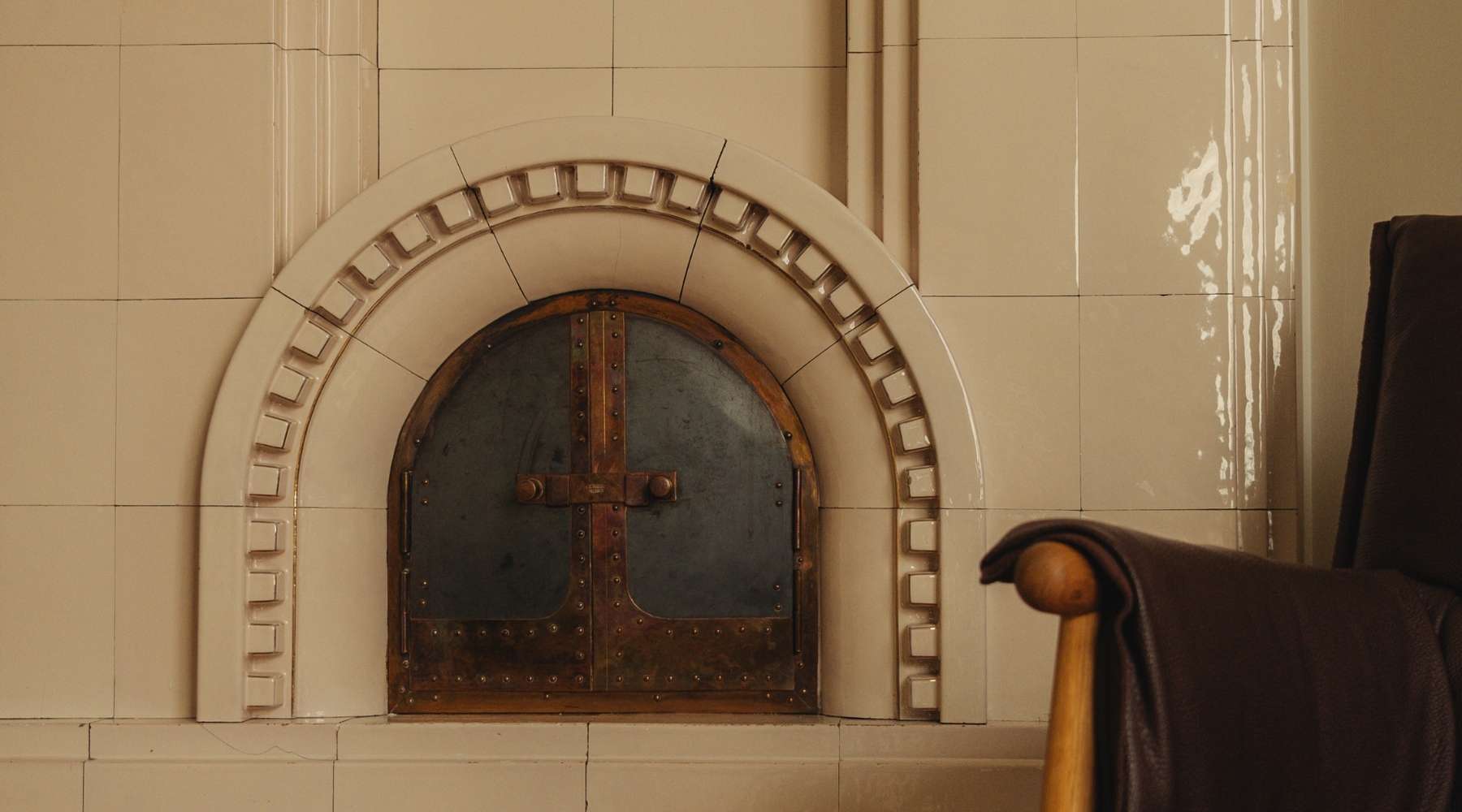THE STORY OF RUNO
Read the story of the hotel’s founder, Erkka Hirvonen, which begins in childhood restoring an old manor, continues through studies and work around the world — even in Dubai — and culminates in the vision of a top hotel realized in Porvoo’s historic Valtimontalo.
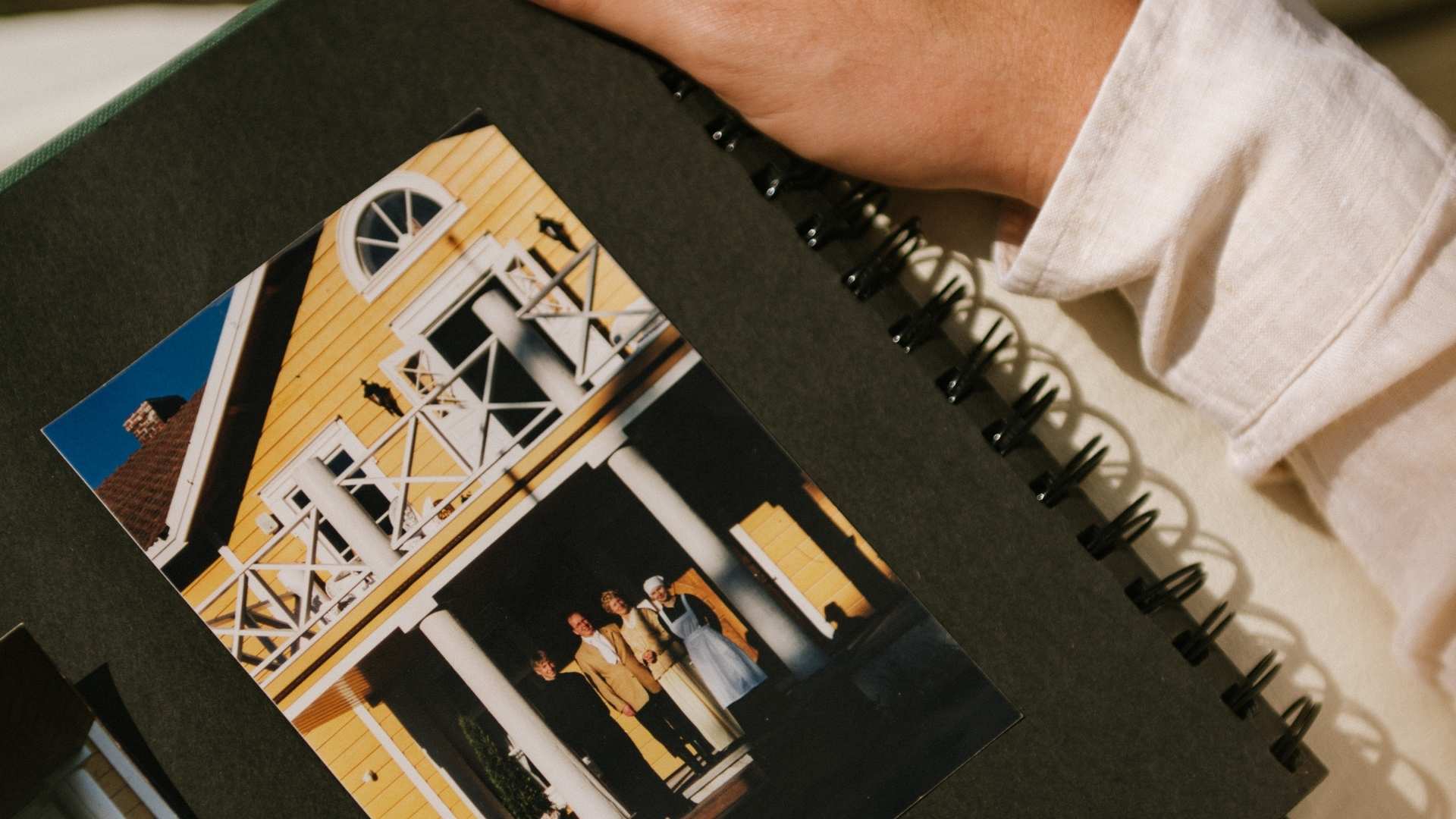
1991 – THE CULTURAL-HISTORICAL BUILDINGS
Welcome warmly to RUNO Hotel Porvoo. Let me introduce myself: I am Erkka Hirvonen, founder and hotel manager of RUNO. RUNO has been my dream for over 15 years — the idea that one day I would develop my own hotel project. My story began when I was about 7 years old, in 1991, when my father inherited half of a small manor from my great-grandfather, who had been displaced from Karelia.
When Finland lost Karelia to Russia after World War II, displaced persons were allocated properties in Finland. My great-grandfather’s family, along with ten other displaced families, shared the Rutumi Manor and its land. Years after my grandfather’s death, my parents acquired the other half of the manor from its then-owner. This began over five years of restoration work, and my three brothers and I spent summers and winters restoring the manor, so I became familiar from childhood with the restoration of culturally and historically significant buildings.
2001 – RESTAURANTS & IMMERSIVE EXPERIENCE
When the manor restoration was complete, we decided to turn it into a catering and event venue. That way, we could not only show our guests what we had accomplished, but also offer them a piece of the beautiful history of the manor. In the early days, our family of four brothers operated the manor, along with the first head chef and his family of five daughters.
The manor’s history held many interesting stories: the famous Finnish sculptor Ville Vallgren’s aunt, Laura Vallgren, had served as the manor’s hostess during its golden age in the mid-1800s. Ville Vallgren wrote about the manor in his ABC book, and we used this material both in our restoration and in planning our service model.
My parents wanted to create an experience for guests in which they would truly feel as though they were in a mid-19th century manor. To support that, they hired two actors to portray the manor’s lady, Laura Vallgren, and its master, Karl-Johan Gylling, who welcomed groups to the manor and led guests into the golden-age world of the manor. All of us employees, siblings and daughters had our roles in the drama: we spoke in an old-fashioned way, so I myself learned the meaning of playfulness and experiential storytelling in customer service.
2005 - STUDIES
Our manor’s event business ignited in me a passion for the hotel and restaurant industry, which led me to work in restaurants, bars, and event services, and eventually study hospitality and hotel management. In my early years of study, I became drawn to hotels because of their more mysterious profile. Hotels were more versatile and more complex than restaurants and bars, and therefore more interesting to me.
Hotels offered much more time and more opportunities to create experiences. That meant that, as a highly empathetic person, I would have greater opportunity to create positive feelings in guests, which is what fascinates me in this field. At the same time, my mother kept saying that our manor would struggle to get meeting groups because there was no lodging.
Inspired by that, I decided to study in my thesis the development of a small hotel in the manor’s old barn, and thereby learn all that is required to operate and develop a hotel. When my thesis and hotel development plan were completed, I understood how complex, challenging, and expensive it is to develop a hotel project — and therefore we had no ability to realize a hotel at the manor then.
But, being someone who loves challenges and fascinated by the complexity of the hotel world, a dream arose in me: if one day I could put the theory learned in hotel development into practice, I would undertake my own hotel project. Pursuing that dream, I headed abroad to build my skills.
2007 - DUBAI
In my third year of studies, I had long sought an opportunity to work at a hotel, but it was extremely difficult. The Finnish hotel industry was rather dull over 15 years ago, and still is to some extent. Ultimately, I applied to be an exchange student in Dubai, because when I studied interesting hotel markets, Dubai came up frequently. There I was drawn to a kind of dreamlike “anything is possible” mentality — exactly the attitude I needed to fulfill my dream.
I eventually went to Dubai to study hotel management at a top school and intern in a top hotel of the same company, Jumeirah. After gaining a year of Dubai experience and completing my thesis, I realized that my true dream was to develop my own hotel project, so I returned to Dubai to learn hotel operations in many different facets, using lessons I had learned in my thesis. While working in Dubai across operations, the commercial side, and development, I began seeking more learning, so I started my MBA focused on tourism and hotel development. Alongside that work, I also studied potential real estate and hotel markets around the world, such as Greece during its real estate crisis in 2015 — wondering whether somewhere I could find a property for my hotel project.
I never even considered Finland a potential market at that time. Young me thought: who would want to travel to Finland, let alone Porvoo, my hometown? During that time I also developed a restaurant concept focused on “social and cross-cultural dining,” but in a first meeting with an angel investor, the idea and concept were shot down immediately and I surrendered — though years later I saw the “social dining” restaurant concept emerge in the world. From that I learned: the next time I pitch to investors, I must prepare better and not give up so easily.
2016 – THE FIRST BITE OF RUNO
While living in Dubai, my brother and partner Arttu Hirvonen visited me annually with his family. We always talked about business opportunities — Dubai was a place of dreams and possibilities and inspired these conversations. In 2016, Arttu first mentioned that Porvoo city was selling its real estate, and the property Valtimontalo (the future site of RUNO Hotel Porvoo) was coming up for sale.
Arttu said, as a local of Porvoo, it was difficult to host guests in his city because there was no decent hotel there. I thought that Finland and Porvoo could not possibly be that strong markets for a hotel, but I said I’d run the numbers and do a short feasibility study on Valtimontalo, using the financial models I developed in my thesis and the lessons from Dubai.
At first, skeptically, I expected the numbers would not support the idea — but the opposite happened: almost all of the feasibility model indicators turned green or orange, which opened my eyes to the possibility and allowed me to put emotions into the project. We did not wait after that. Arttu and I began discussions with Porvoo’s city leadership about acquiring the property and developing the hotel in Valtimontalo. We attempted to purchase the property quickly, even before it was listed publicly, though we did not yet have investors. We understood the property’s strong potential, and in its favor we moved quickly and took risks.
However, the property eventually went to public bidding, which took time, and in the meantime we worked to assemble an investor team. The first to join during the development phase was Porvooan Joakim Seeberg. Then we found four more investors: locals Roni Collin, Toni Oksanen, and Simo Seistola, and Espoo’s Matti-Pekka Sävelkoski. Together the seven of us formed the ownership team and board, which remains united to this day.
2017 – THE NAME RUNO
The hotel name RUNO came to me one night in Dubai, when the project needed a name. While studying the property’s history, I learned that the building was constructed in 1912 — a year after the neighboring yellow building. The inspiration and motivation for Valtimontalo included the movement of Fennomania. Fennomania was a movement in the early 1900s when Finnish nationalism sought to distinguish itself culturally from Swedish and Russian influences.
In relation to Valtimontalo, this meant: the neighboring large yellow stone building had been built by the Swedish-speaking community and Swedish-speaking bank. In a Fennoman spirit, the Finnish-speaking community and Finnish bank wanted to build next door something larger and more representative of Finnish culture. Accordingly, details from the Kalevala (Finland’s national epic) and poetry were integrated into the building’s facade, such as carvings of the face of the Kalevala hero Väinämöinen in its attics. As a second inspiration for the name RUNO came the national poet Johan Ludvig Runeberg, who moved to Porvoo in 1837 and spent most of his life there.
When Runeberg moved to Porvoo, he lived initially in the Astenius Inn located at the corner of today’s hotel property. Mrs. Astenius was a pioneer of the hotel world in Porvoo, later opening Hotel de Russie and Hotel de Paris in the city. Meanwhile her son Lars apprenticed as a baker in St. Petersburg and while Runeberg resided at the inn, Lars baked a pastry that Runeberg introduced to his wife Fredrika Runeberg. She in turn developed that pastry into today’s Runeberg’s Torte, which became Finland’s national pastry. These two themes — Finnish language and poetry — inspired in me this strong Finnish name, RUNO, meaning “poem.”
2019 – PLANNING
We won the public tender for the Valtimontalo property and acquired the building in June 2019. By then I had already sourced design teams for the project so we could hit the ground running once the property belonged to us in June. The design team included lead architect Eve Sarapää, interior architect Joanna Laajisto, and project consultant Jani Heikari. There were many additional designers, but I formed the main design team with these three. I had been refining RUNO’s concept in my mind for over ten years, so I looked for designers — especially for interior architecture — who understood and valued my vision and could refine and develop it further.
Eventually Joanna Laajisto was selected as interior architect, and in hindsight that decision was the right one. Collaboration with Joanna and the entire main design team was extremely fruitful and efficient. RUNO’s vision was clear to me already in 2017 when we presented the project to investors, and even today I present the concept in staff orientation from the 2017 concept deck. I had the hotel’s floor plan already made in 2017, which didn’t change much. The property was ideal for a hotel and did not allow much deviation from what I envisioned. My clarity was helped by living in the empty, ghostlike building (current room 221) for almost half a year before demolition, walking through empty rooms and corridors and mapping out spatial solutions for my vision.
In the initial phase, I also developed a 38-step customer experience path — the route I want a guest to take and feel from the first time they hear of us, until they become a regular guest. That customer experience path is still only about 70% implemented, and we have many experience-vision ideas yet unrealized, as some are especially visionary and challenging to execute. Naturally, some of the experience elements have lived and died over the years as we learned which should be implemented differently or not at all.
With these visions, thoughts, and documents, we were able to prepare very thoroughly in the design and preparatory phase — and thus we were ready when we received the keys to the property.
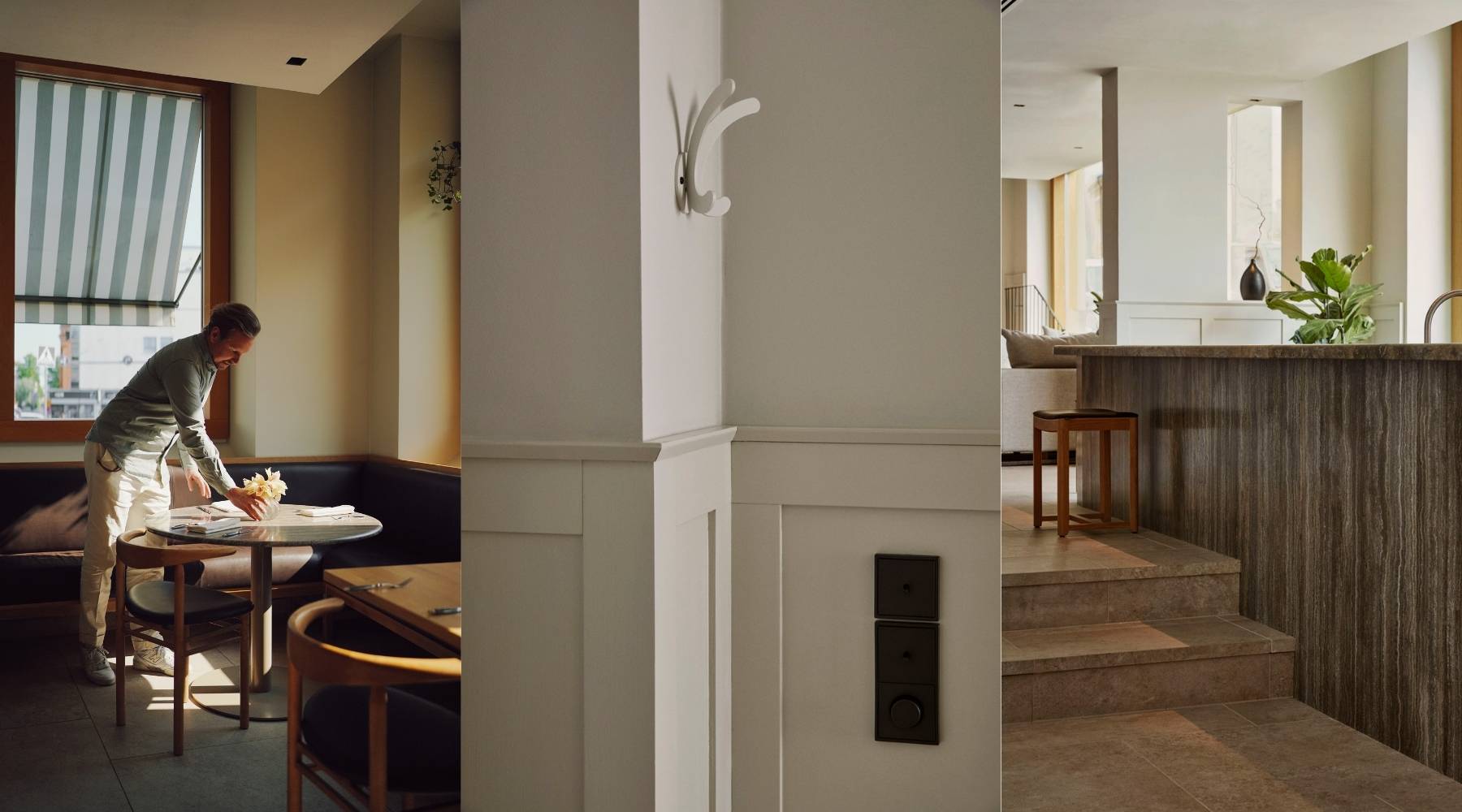
2020-2021 – CONSTRUCTION
We began demolishing the property at the turn of 2020, as the design required. Only through demolition could we gather information not available from old blueprints. Originally built in 1912, the building known as Valtimontalo had been both a bank and a residence. Our current restaurant, bar, and kitchen belonged to the bank. On the reception level was a flower shop, and the conference rooms had housed Porvoo’s first movie theater. In what is now the “Parturi” meeting room there was a men’s salon from the property’s first days until we purchased it. I still visit the last barber who left. The current hotel room floors were once luxury apartments — for example, the bank manager lived in what are now rooms 307–311.
We ultimately began construction in June 2020. The COVID-19 pandemic brought both headwinds and tailwinds in the bidding for contracting. Of five main contractors, four were local. We put up big window stickers saying “opening May 2021” with all the contractors’ names following — thus creating a sense that “everyone can see we’re creating this city’s new landmark, and it must be ready in 11 months.” Rather than despairing, the contractors became proud and ambitious, and we finished on schedule. Guests can see the quality of the craftsmanship, and the quality is indisputable.
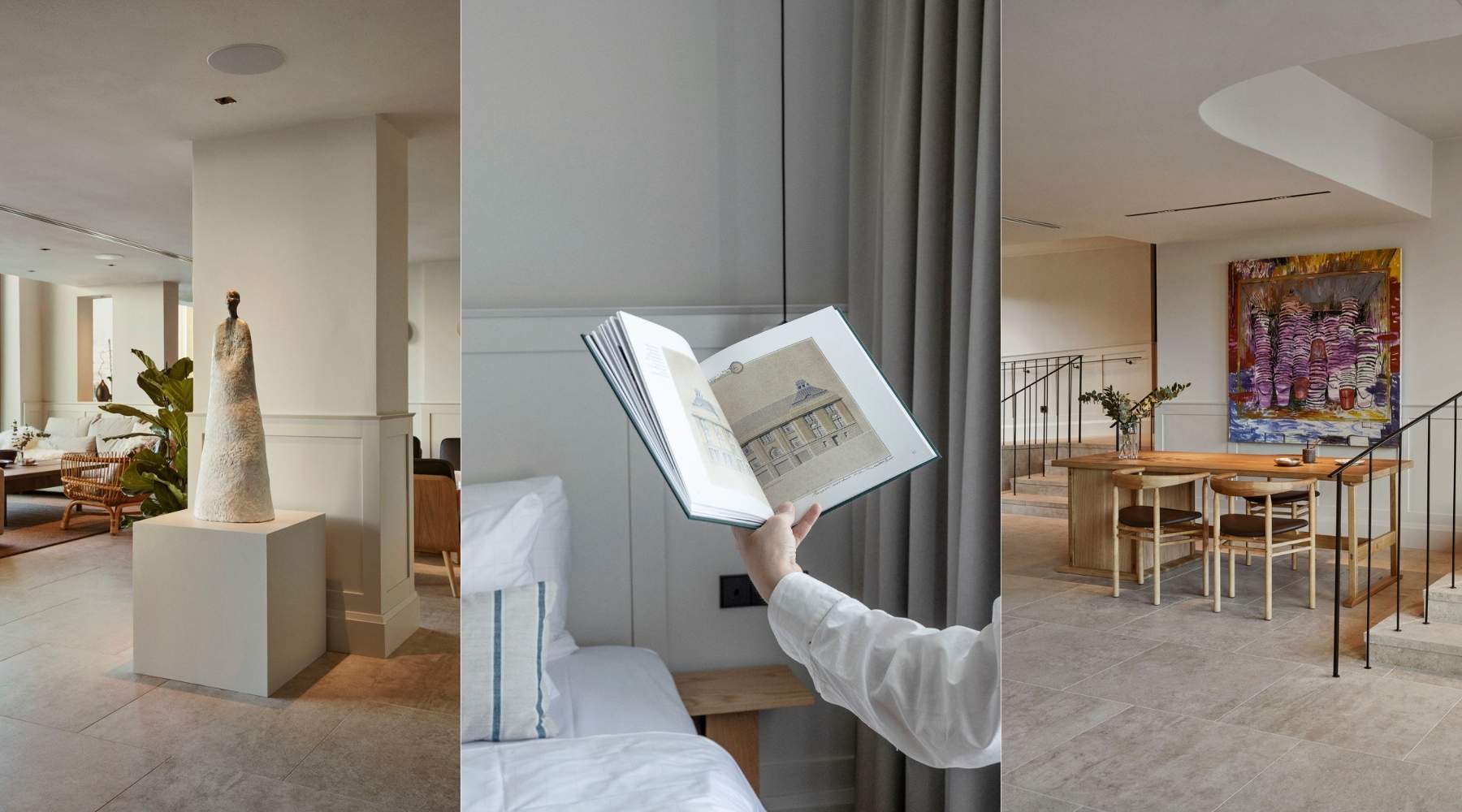
2021 – RUNO HOTEL PORVOO
Through this letter I hope you have begun to discern the background of RUNO’s birth, and how these roots may reflect in RUNO’s surroundings. Now I’ll tell more specifically what RUNO means to me, what I wanted RUNO to embody, and where the remaining inspirations for the concept come from. RUNO’s vision is to be a handcrafted top hotel that feels homely and heartfelt, while challenging old-school industry practices.
In my concept presentation, I had three benchmark hotel concepts that all inspired me in their unique ways. The first was Ett Hem, Stockholm — this soulful hotel epitomizes coziness and non-hotel feels, which I want RUNO to feel like, too. In our service model and environment, I want to create a feeling as if you are visiting a friend or family. The second inspirational concept is Soho House, whose signature lies in their ability to reflect local culture and craftsmanship richly and abundantly. I want RUNO to proudly and boldly represent Finnish and Nordic craftsmanship in building, restoration, carpentry, furniture, décor, art, food, drink, etc. The third inspiration was Ian Schrager and his Edition hotel concept. Ian Schrager is a bold pioneer in boutique hotels and the former founder of Studio 54. After Studio 54, he turned his energy to creating small, experience-oriented hotels in New York, which developed into the boutique hotel concept.
In the 2000s he developed the Edition hotel concept, which was later sold to Marriott to operate. The Edition concept’s harmony, minimalism, and lighting were elements I wanted to use for RUNO as a canvas onto which I could integrate the cultural richness of Soho House and the hominess of Ett Hem. In general, Ian Schrager inspires and motivates me in his courage to challenge and transform the hotel industry. For the final polish of the concept, I wanted to ensure sensuality so that every detail and sense is carefully considered and tested, to create a calming and relaxing environment. For this I developed the 4S method (Sight, Sound, Smell, Sensation), meaning that every purchase or touchpoint affecting a guest had to satisfy all four senses. For example:
- a chair had to look good
- it had to sound good when used
- it had to smell pleasant
- it had to feel good
The power of this method is proven in countless feedbacks in which guests say they can’t specify why they feel good but just do. That feeling arises subconsciously: when all senses are satisfied (or none hindered), the experience becomes seamless. We aim for that state in everything we do, so guests simply have good feelings.
I hope you feel the same way and that through this letter you’ve reached deeper into RUNO’s world.
Welcome, and enjoy.
Erkka Hirvonen
RUNO Founder
Book your stay at RUNO
Welcome to RUNO – a place to relax, unwind, and enjoy the moment.
